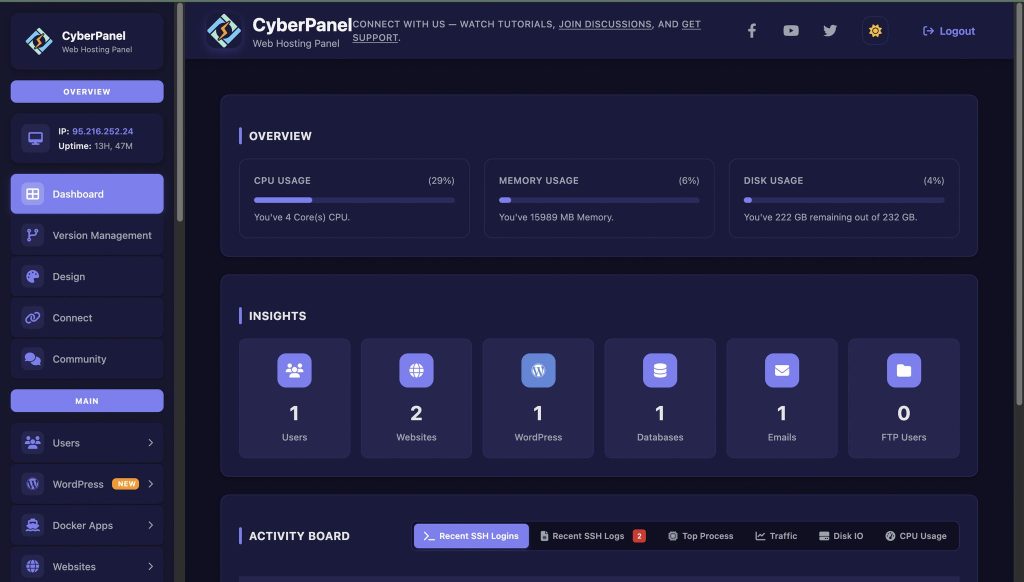Have you ever faced a networking challenge while building and scaling applications on Kubernetes? You are not alone there. Containers need secure communication, clusters must handle thousands of requests, and policies should prevent unauthorized access. This is where Calico Kubernetes appears on screen.
Calico is an open-source network security solution. It is built for containers, Kubernetes, and cloud environments. It provides you with high-performance networking, fine-grained security policies, and compatibility with different cloud platforms. You can rely on it for fast, secure, and reliable workloads.
In this guide, we are going to explore Kubernetes Calico in-depth. We will discuss its installation, use cases, advantages, error troubleshooting, and much more. Let’s go together!
What is Calico Kubernetes?
Calico Kubernetes is a CNI plugin. It provides networking and security for Kubernetes clusters. It handles:
- Pod-to-pod communication across nodes
- Cluster-wide networking with a routing-based architecture
- Network policies for access control and microsegmentation
Calico uses ‘Border Gateway Protocol’ to enable security and efficient routing. This provides you with faster performance, low latency, and more predictable behaviour in production. To put it simply, Calico ensures that your Kubernetes pods can talk to each other securely, effectively, and reliably.
Why Kubernetes Calico is Better Than Other CNIs?
Here is why Kubernetes Calico is the best:
Get exclusive access to all things tech-savvy, and be the first to receive
the latest updates directly in your inbox.
| Feature | Calico Kubernetes | Other CNIs (e.g., Flannel, Weave) |
|---|---|---|
| Networking model | Pure Layer 3 routing (BGP) | Mostly overlay networks |
| Security policies | Advanced network policy support | Limited |
| Scalability | Highly scalable for enterprise workloads | May face limits |
| Cloud-native support | Works on bare metal, VMs, and clouds | Often tied to specific platforms |
| Performance | Low latency, high throughput | Overhead due to encapsulation |
How to Install Calico on Kubernetes?
Here are the steps to install Calico on Kubernetes:
Step 1: Install Kubernetes if Not Already
Firstly, you have to set up a Kubernetes cluster.
Example for kubeadm:
sudo kubeadm init --pod-network-cidr=192.168.0.0/16Step 2: Apply Calico Manifest
Now, install Calico using the official manifest:
kubectl apply -f https://docs.projectcalico.org/manifests/calico.yaml
Step 3: Verify Installation
After installing Calico, you have to verify if pods are running:
kubectl get pods -n kube-system
Step 4: Test Pod Networking
After verification, you have to deploy a simple nginx pod and check connectivity:
kubectl run nginx --image=nginx
kubectl get pods -o wide
You have to ping between pods across nodes to confirm Calico networking.
How to Install Kubernetes on Cloud Platforms?
You may need to install Calico Kubernetes on EKS, GKE, or AKS. The process is almost the same but with provider-specific tweaks. Here is how to install Kubernetes on these cloud platforms:
- AWS EKS → You have to disable VPC CNI if replacing with Calico. Then apply Calico manifests. Calico can run as the primary CNI or in policy-only mode if you keep VPC CNI.
- GKE → To install Kubernetes on GKE, you have to enable network policy in your cluster settings and then apply the Calico manifest. Calico acts as the enforcement layer for Kubernetes NetworkPolicy.
- Azure AKS → AKS supports Calico both for overlay networking and policy enforcement, making it a flexible choice for enterprises running multi-tenant workloads.
Errors & Troubleshooting
It is possible that sometimes you may face problems while installing Calico on Kubernetes. It will happen when configurations are not aligned with your cluster setup. Here are common errors and how to fix them:
- Pods stuck in “Pending” → Usually caused by the wrong CIDR block during
kubeadm init. Always ensure the pod CIDR matches the Calico manifest. - Calico pods CrashLooping → Indicates conflicting CNI plugins (like Flannel or Cilium). Remove the old CNI before installing Calico.
- No pod-to-pod communication → Often a firewall/security group issue. Cloud providers may block traffic by default. Adjust your rules to allow inter-node communication.
- DNS issues with CoreDNS pods → Calico IPIP or VXLAN tunnel misconfiguration can block DNS pods. Double-check IP pool settings.
Pro tip: Always verify your Calico installation kubectl get pods -n calico-system to ensure all pods are running.

CyberPanel’s Role in Kubernetes + Calico Frameworks

CyberPanel is a contemporary web hosting control panel that fits nicely into a Kubernetes-powered infrastructure space. The synergistic combination of Calico Kubernetes networking with CyberPanel workloads promotes the best of both worlds.
Here are a few ways CyberPanel adds value:
- Quicker website and application delivery with scalable Kubernetes clusters.
- More secure policies for hosted applications (Calico includes pod-level rules, and CyberPanel protects web applications).
- Multi-tenant isolation for SaaS or hosting providers.
- Hybrid deployments where Calico is providing secure connectivity for the VMs and the container-based CyberPanel workloads.
People Also Ask
Is Kubernetes Calico good for AI/ML workloads?
Yes, it is good. AI/ML needs high throughput, low tenancy, and isolated environments. Calico gives you deterministic performance and network policies to secure AI jobs running on Kubernetes.
Can I use Calico with service meshes like Istio or Linkerd?
Yes, you can use it with service meshes. Calico works alongside service meshes. It ensures L3/L4 security while the service mesh handles L7.
Can I use Calico Kubernetes in edge computing?
Yes, Calico supports lightweight Kubernetes distributions like K3s. This makes it perfect for edge and IoT deployments.
Is Calico better than Flannel for Kubernetes?
Yes, it is better. Because it provides lower tenancy, higher performance, and advanced network policies.
Wrapping Up!
To sum up, with the growth of Kubernetes, networking and security still remain top priorities. Calico Kubernetes gives you secure, scalable, and high-performance networking. It is the best for modern containerized workloads. Moreover, Calico enforces strict security policies and enables seamless hybrid and multi-cloud deployments. This ensures reliability and compliance at scale.
Ready to enhance your Kubernetes journey? Install Calico and deploy smarter, faster, and safer today!



